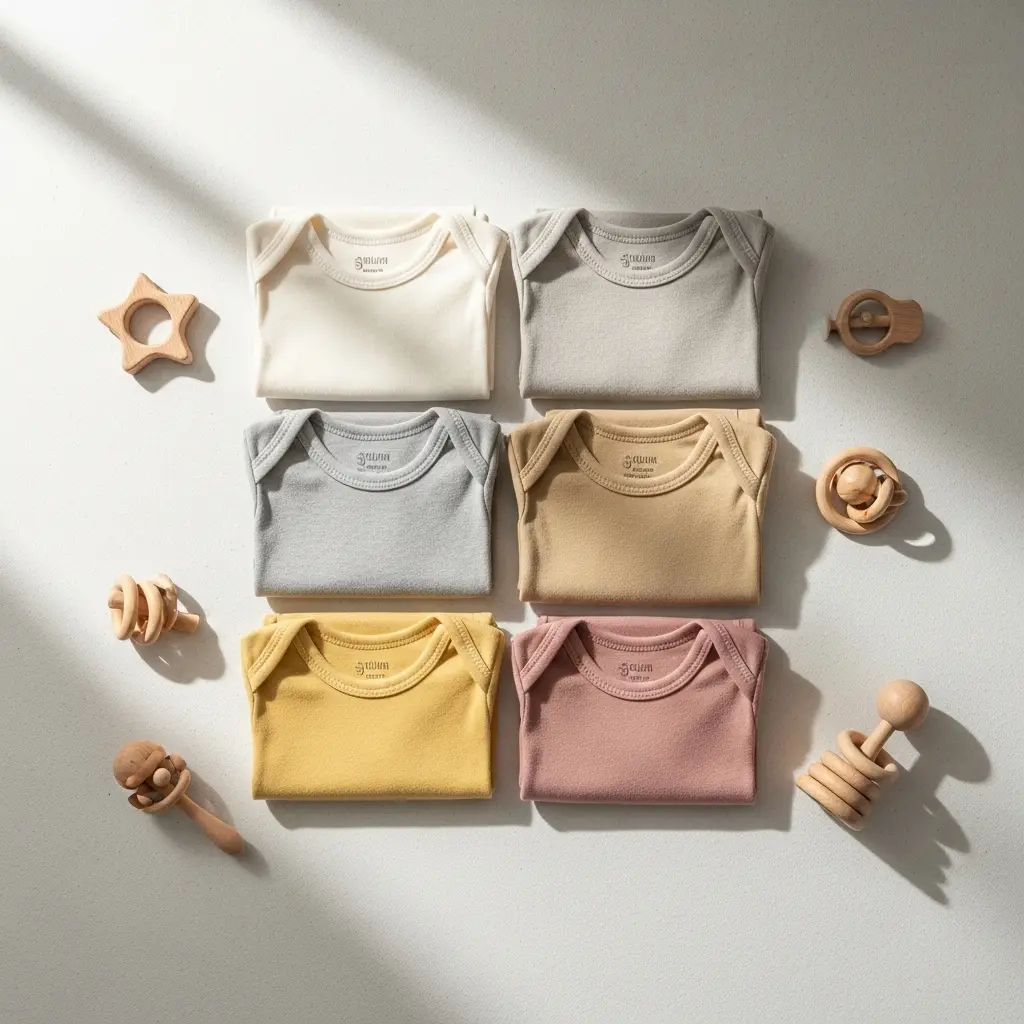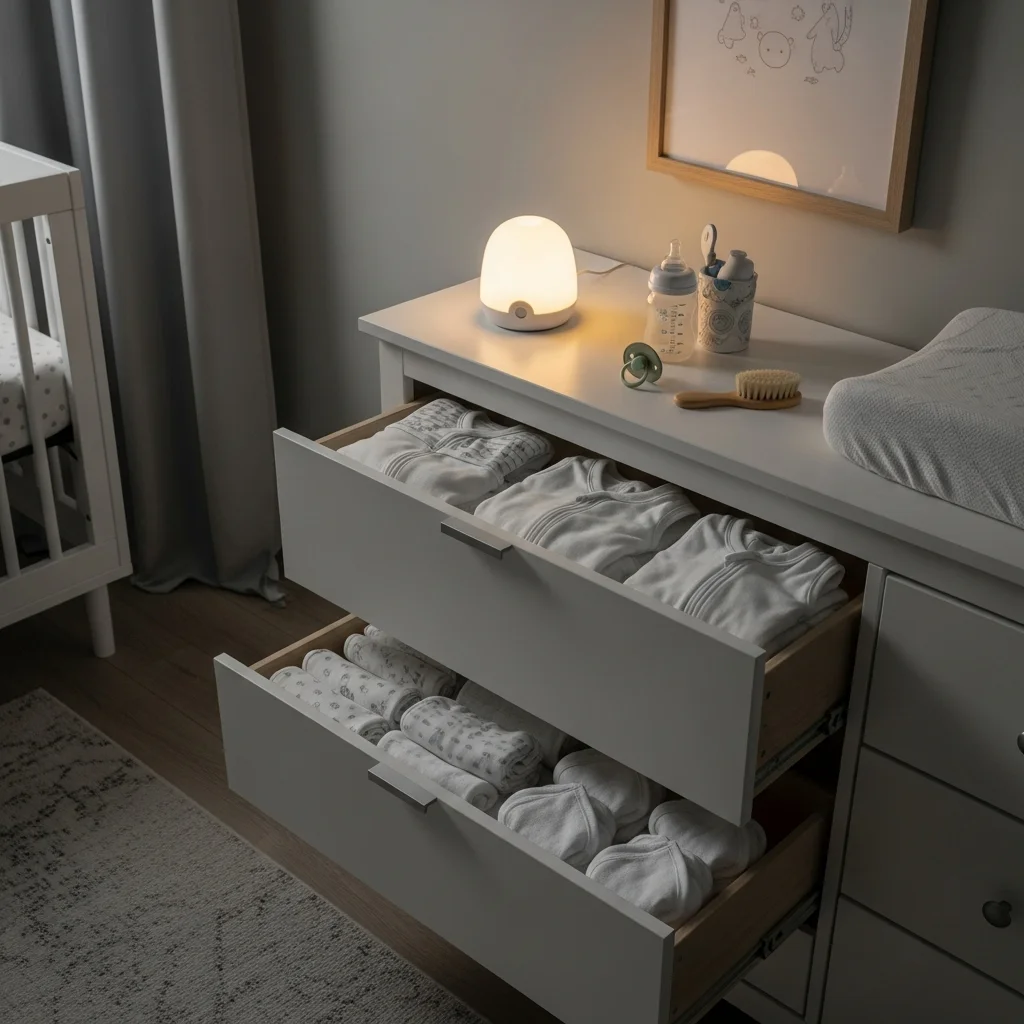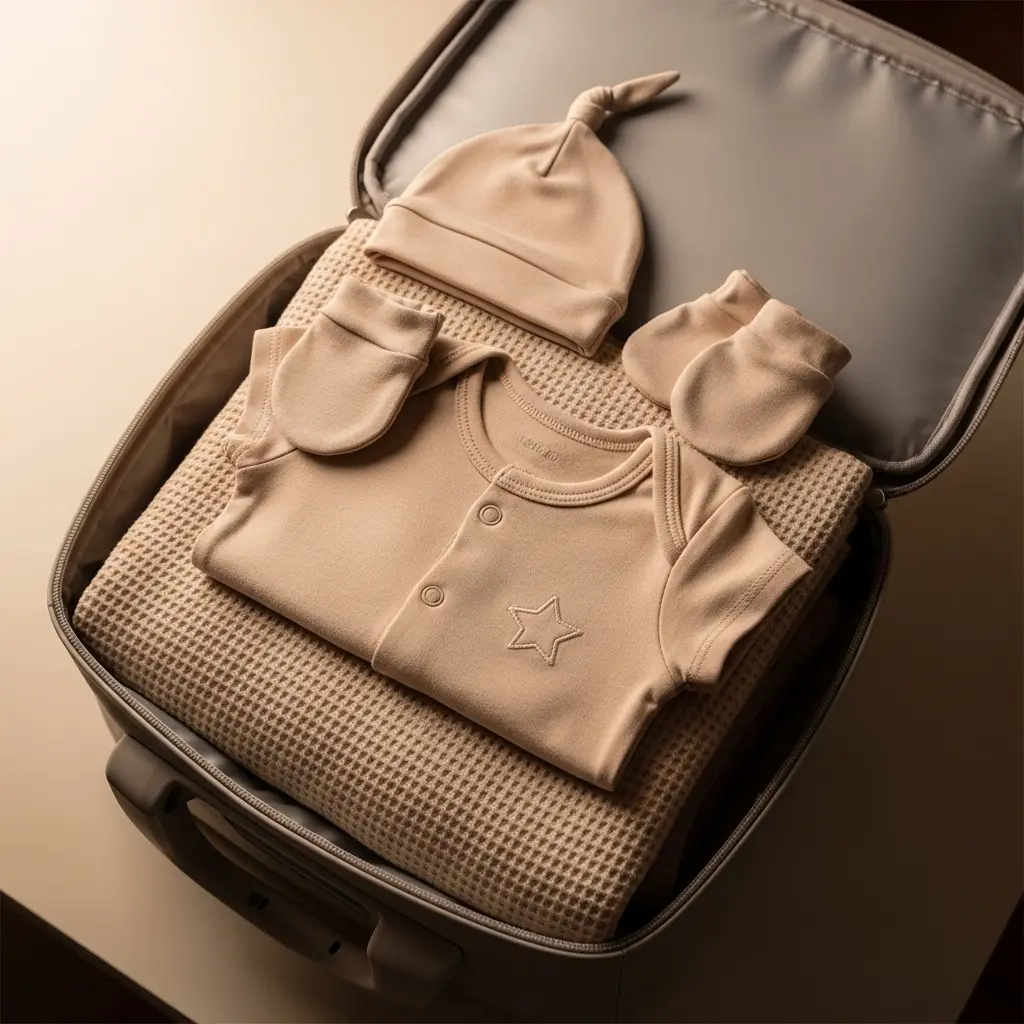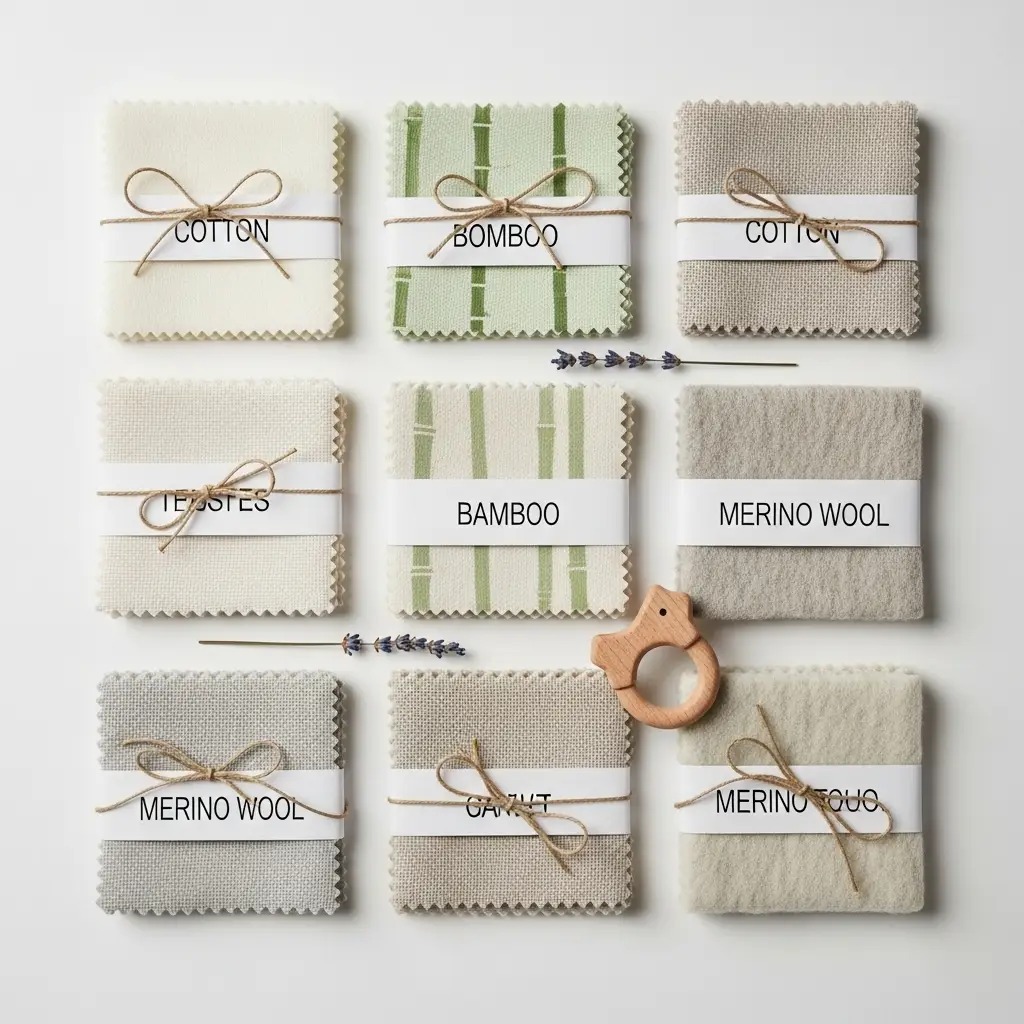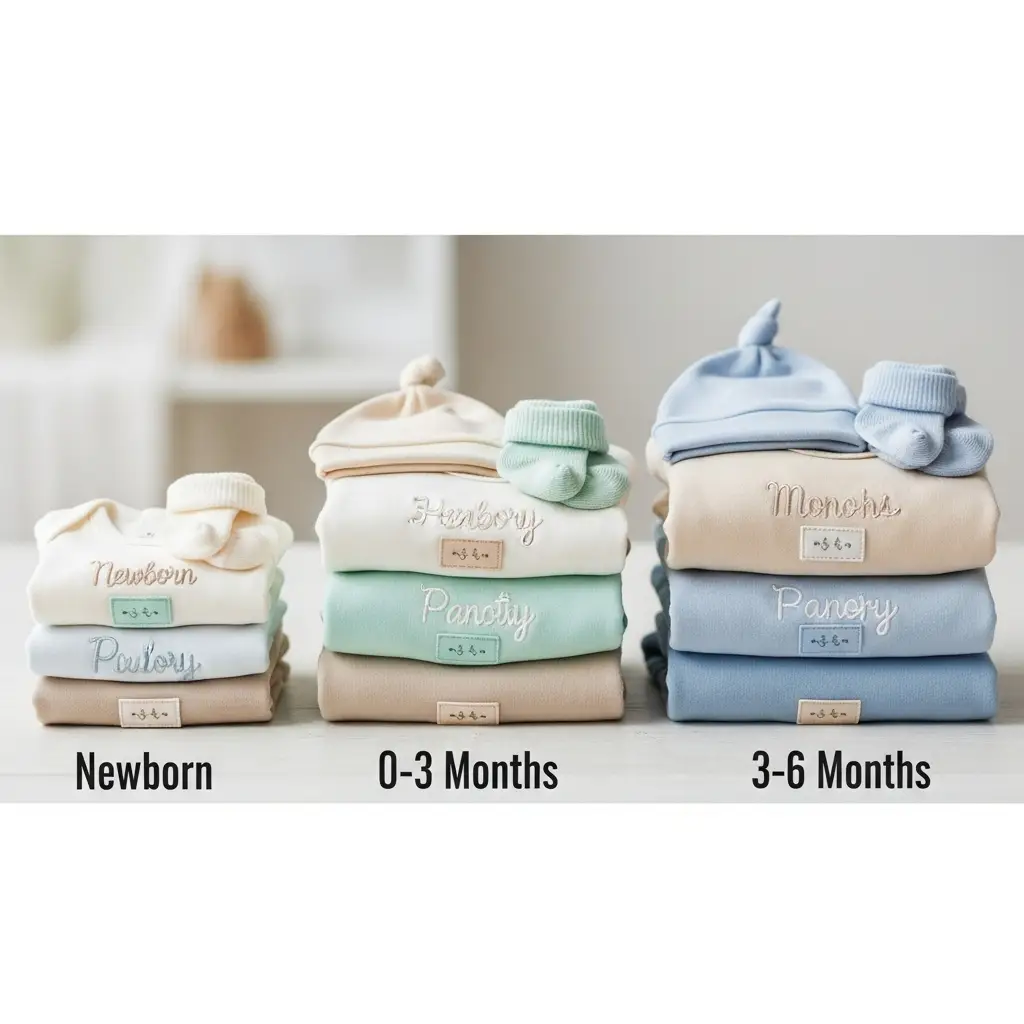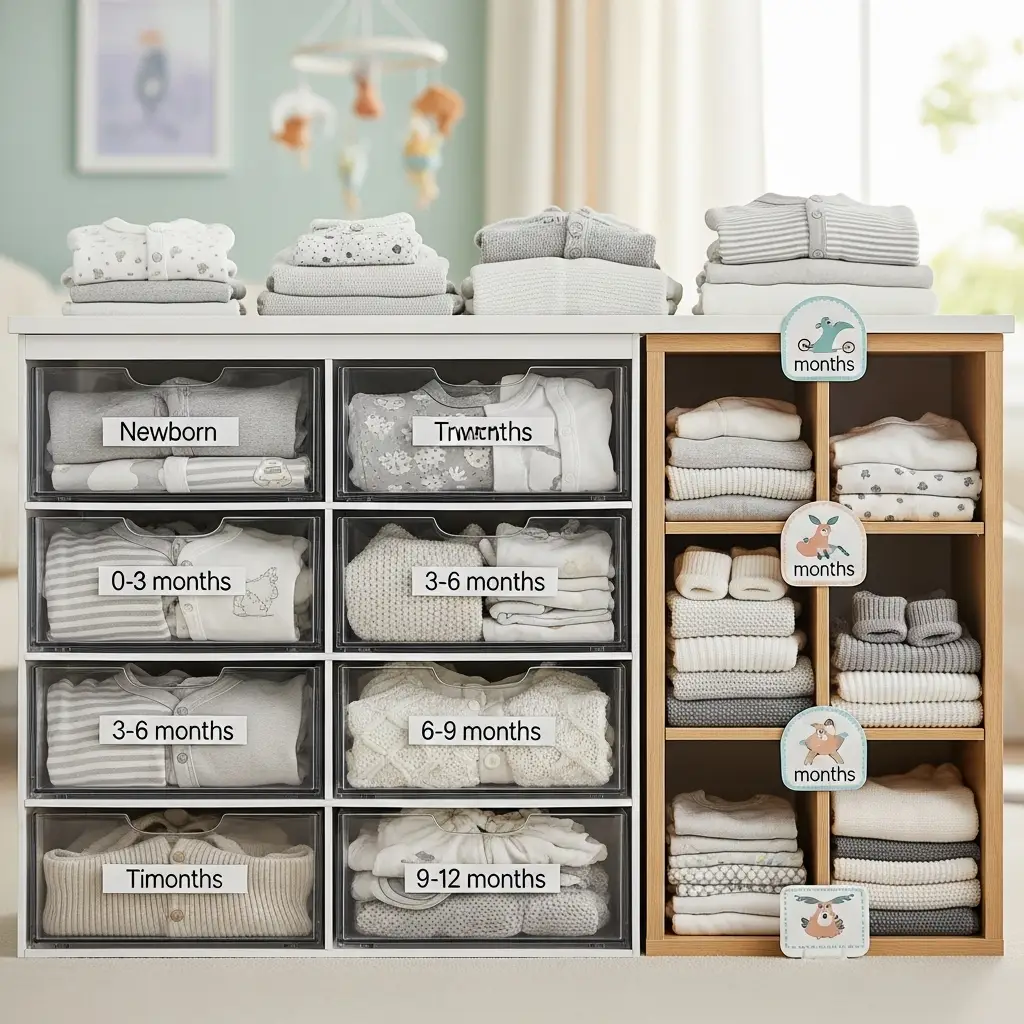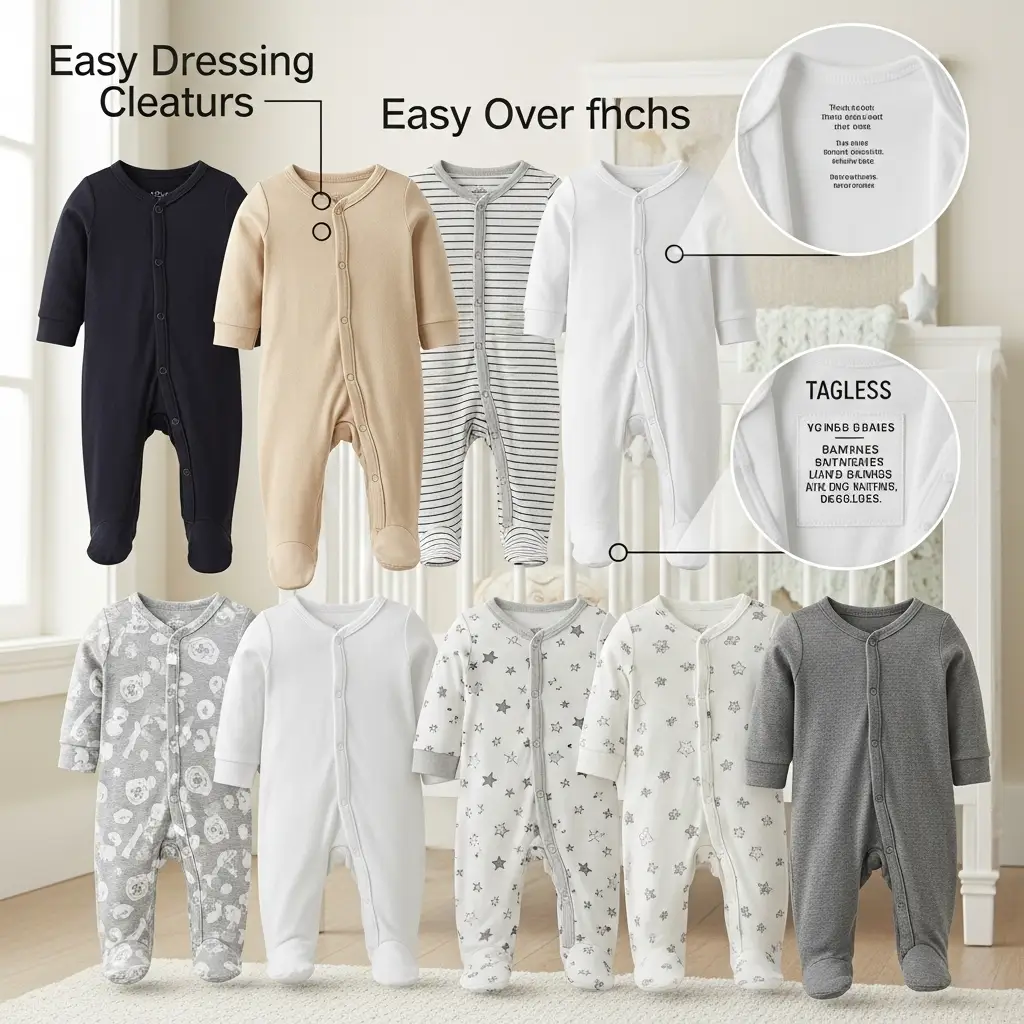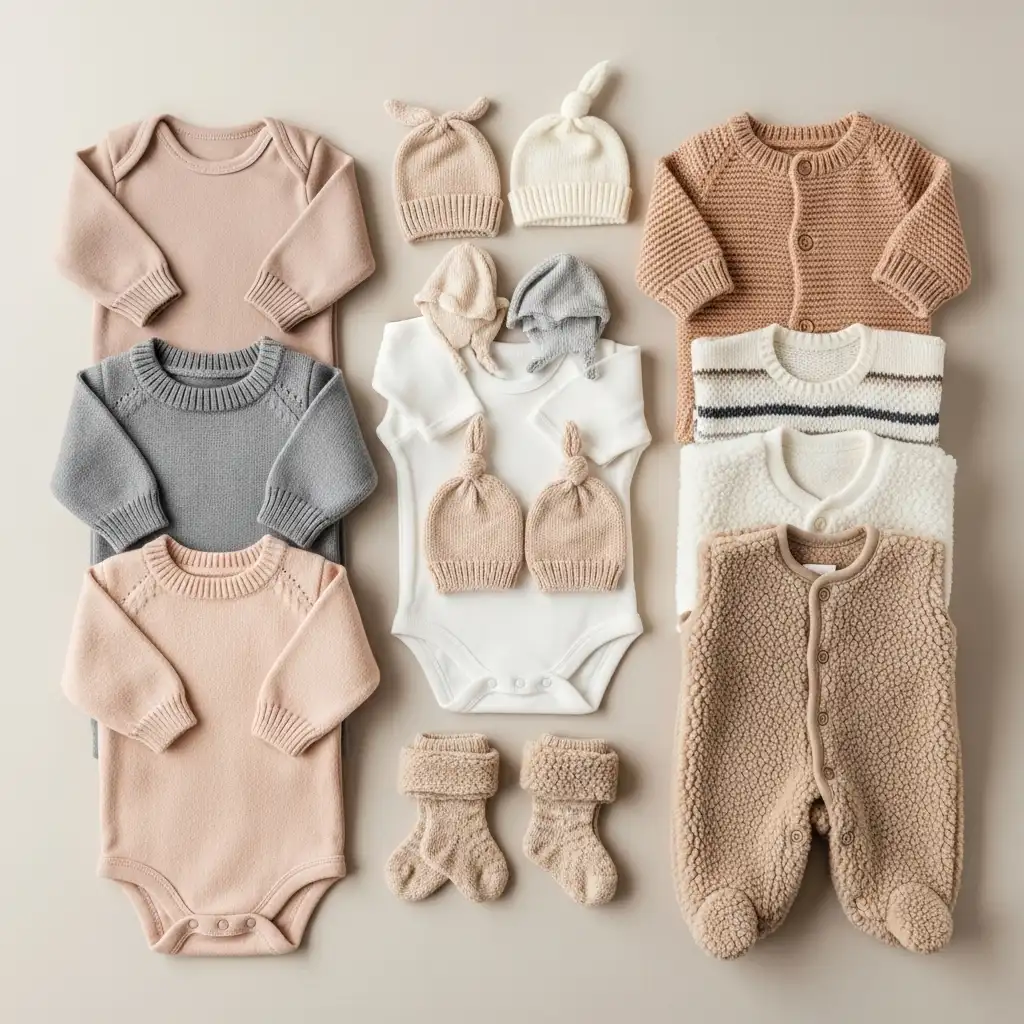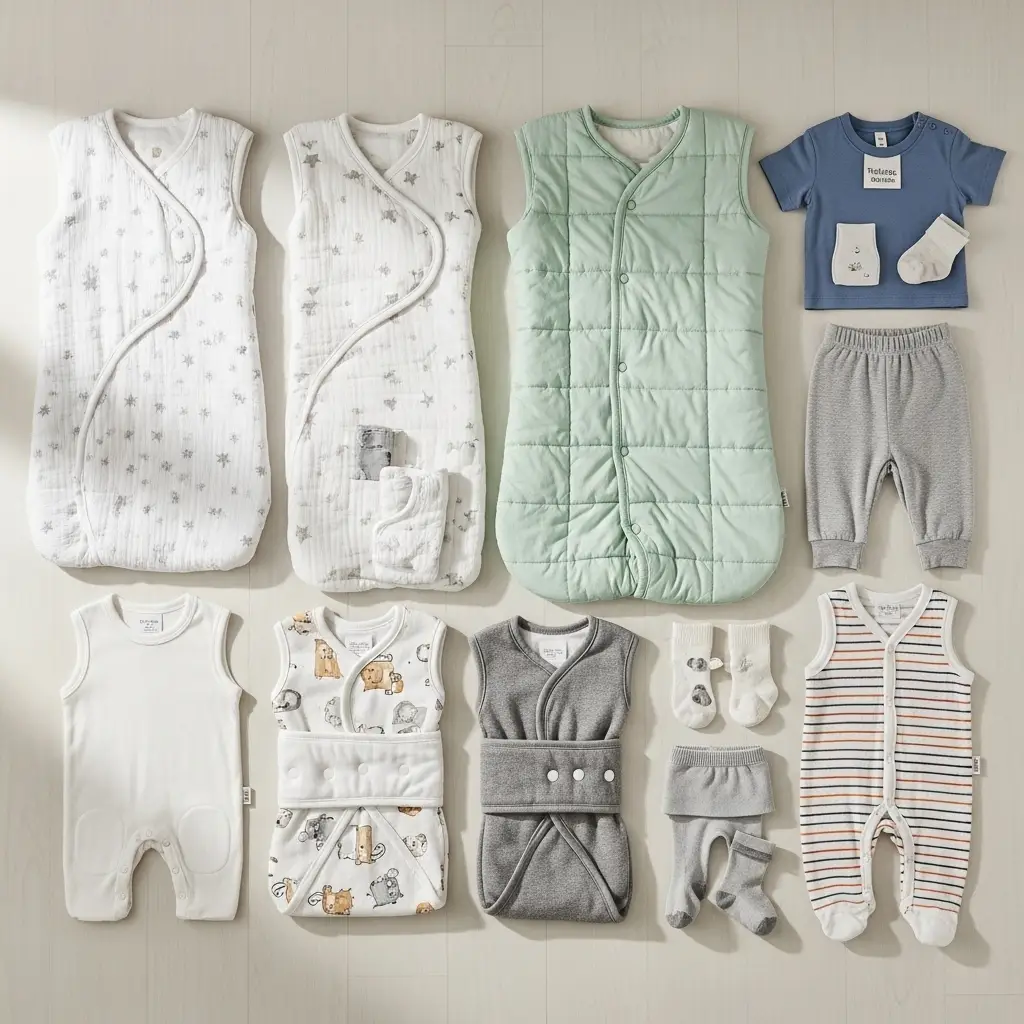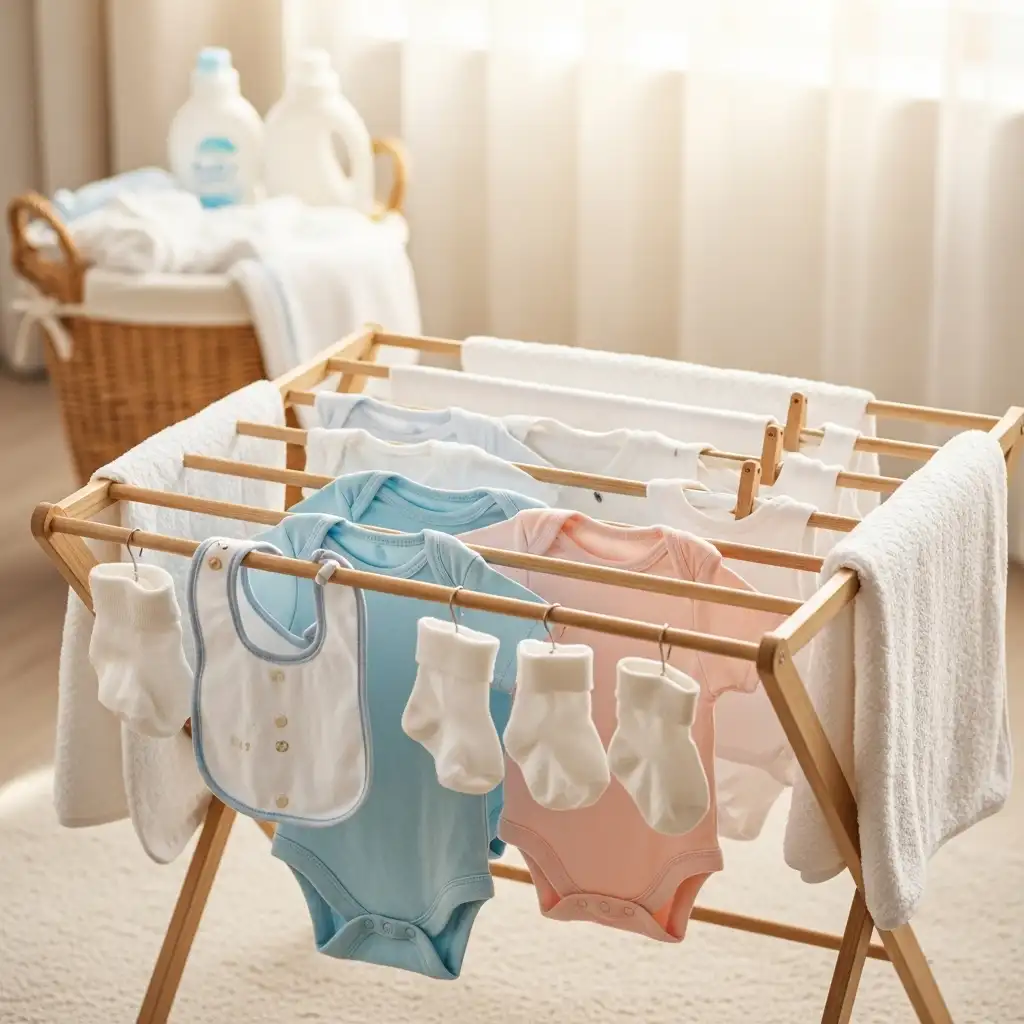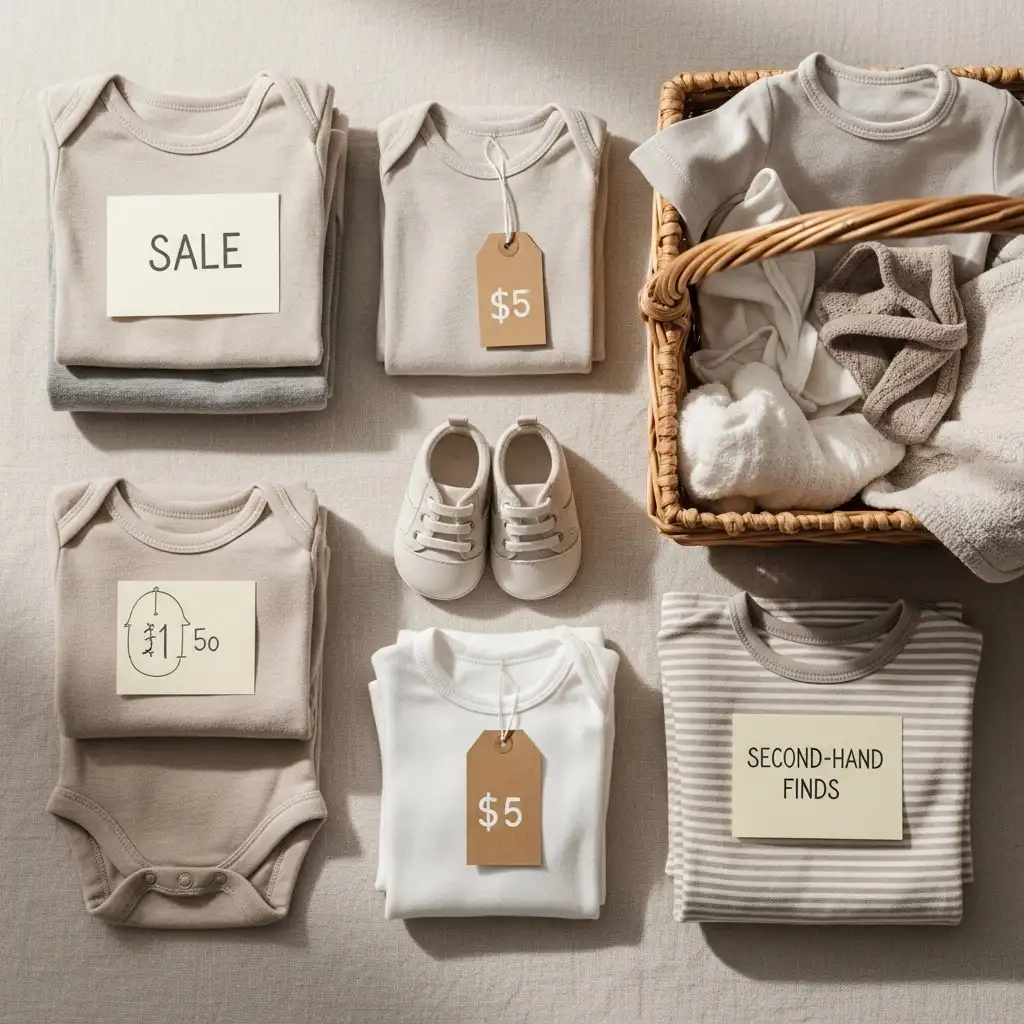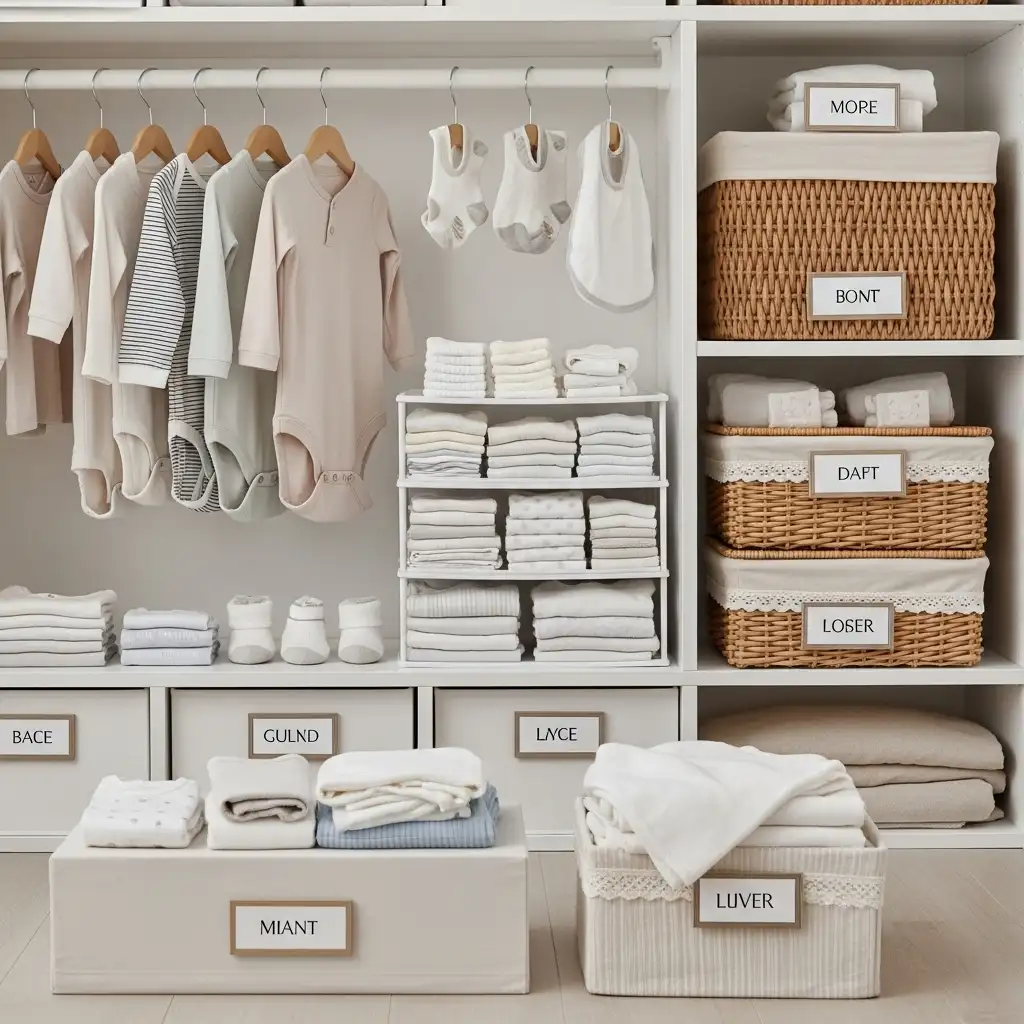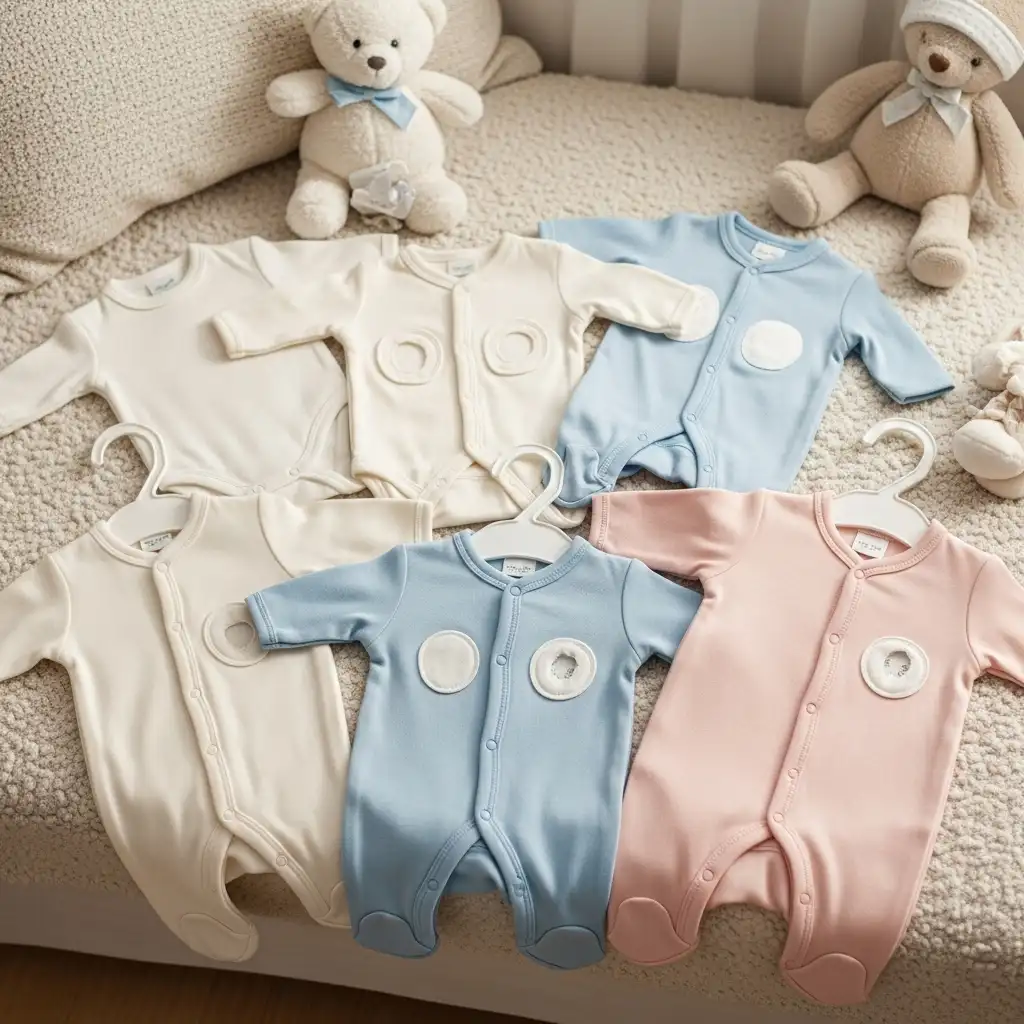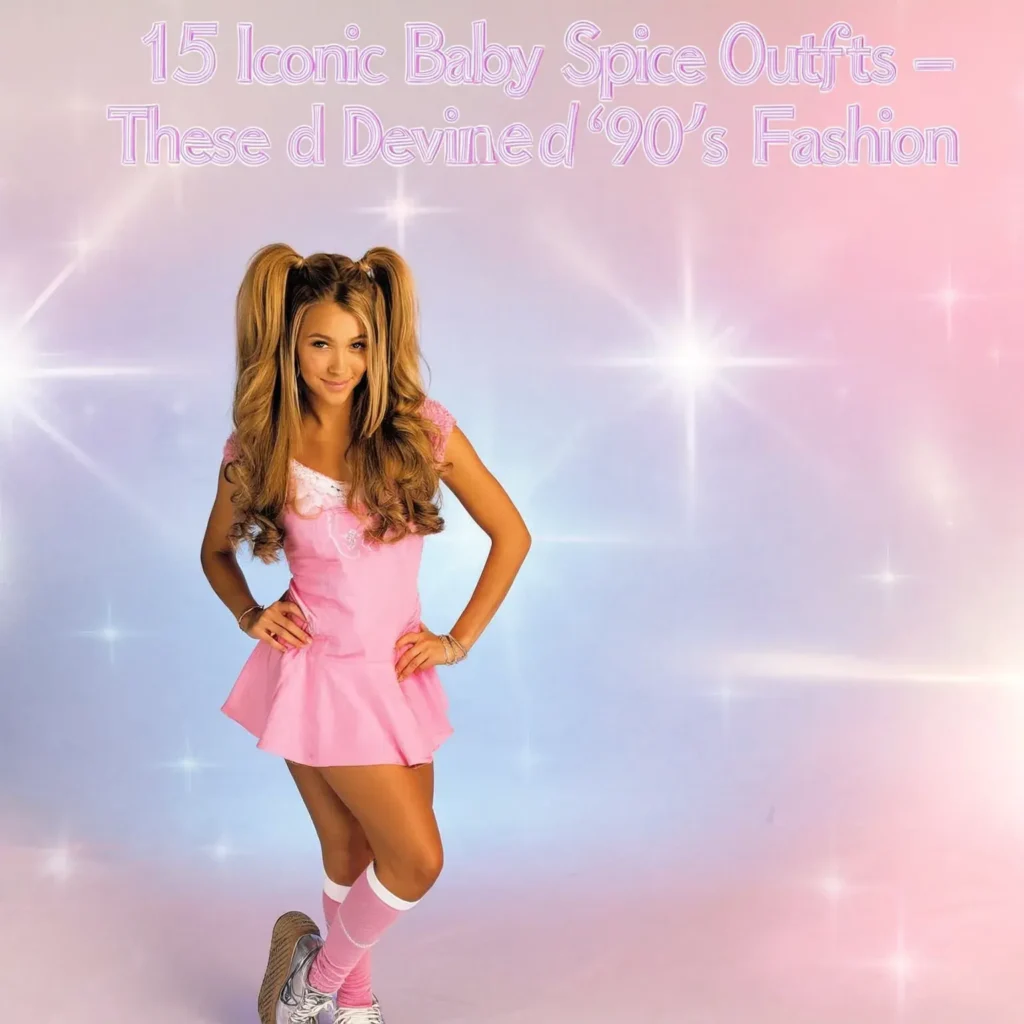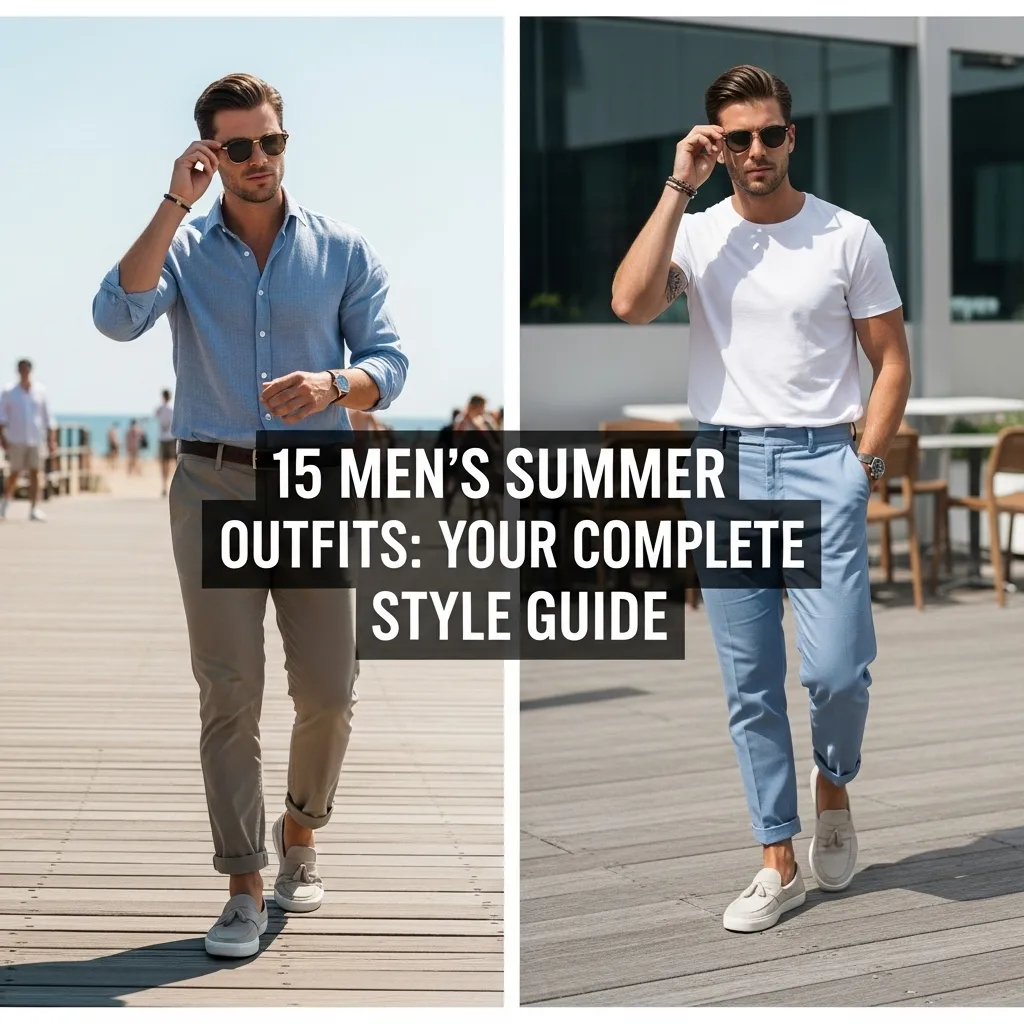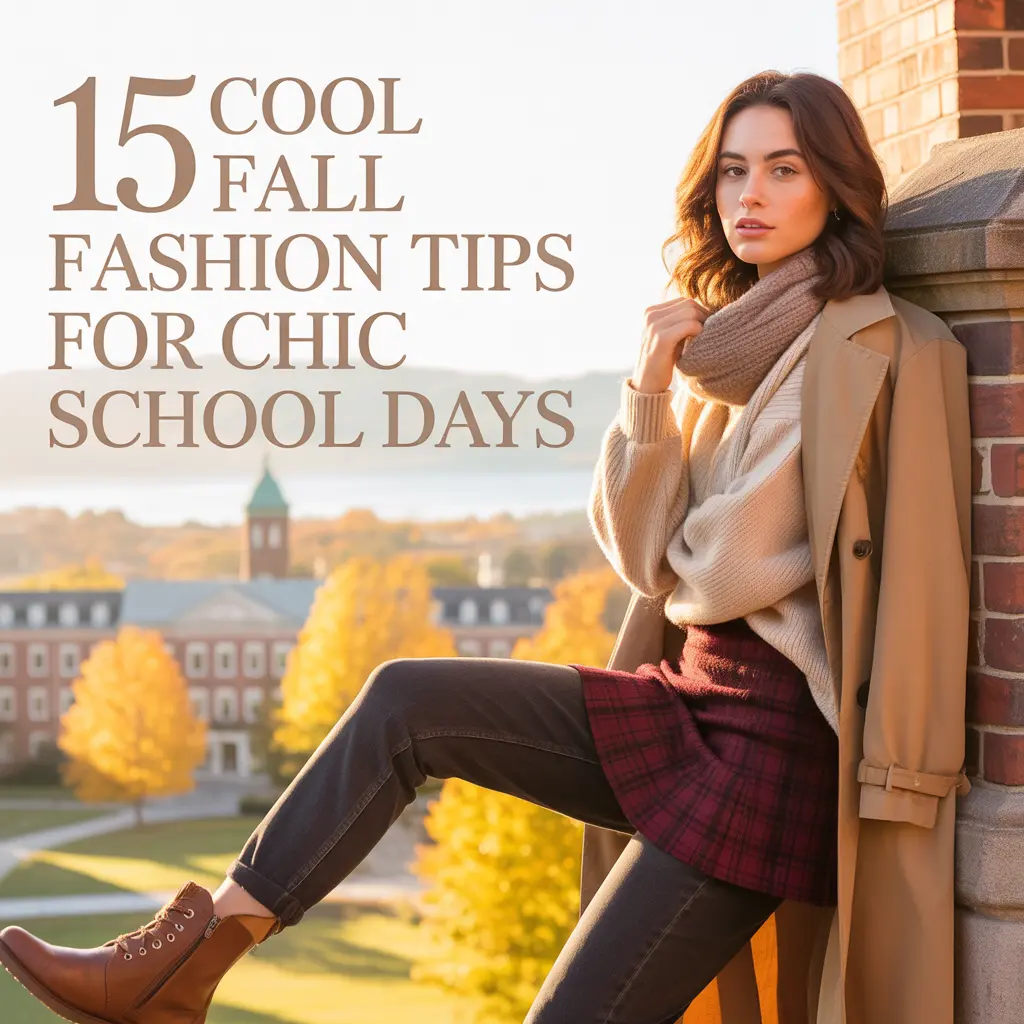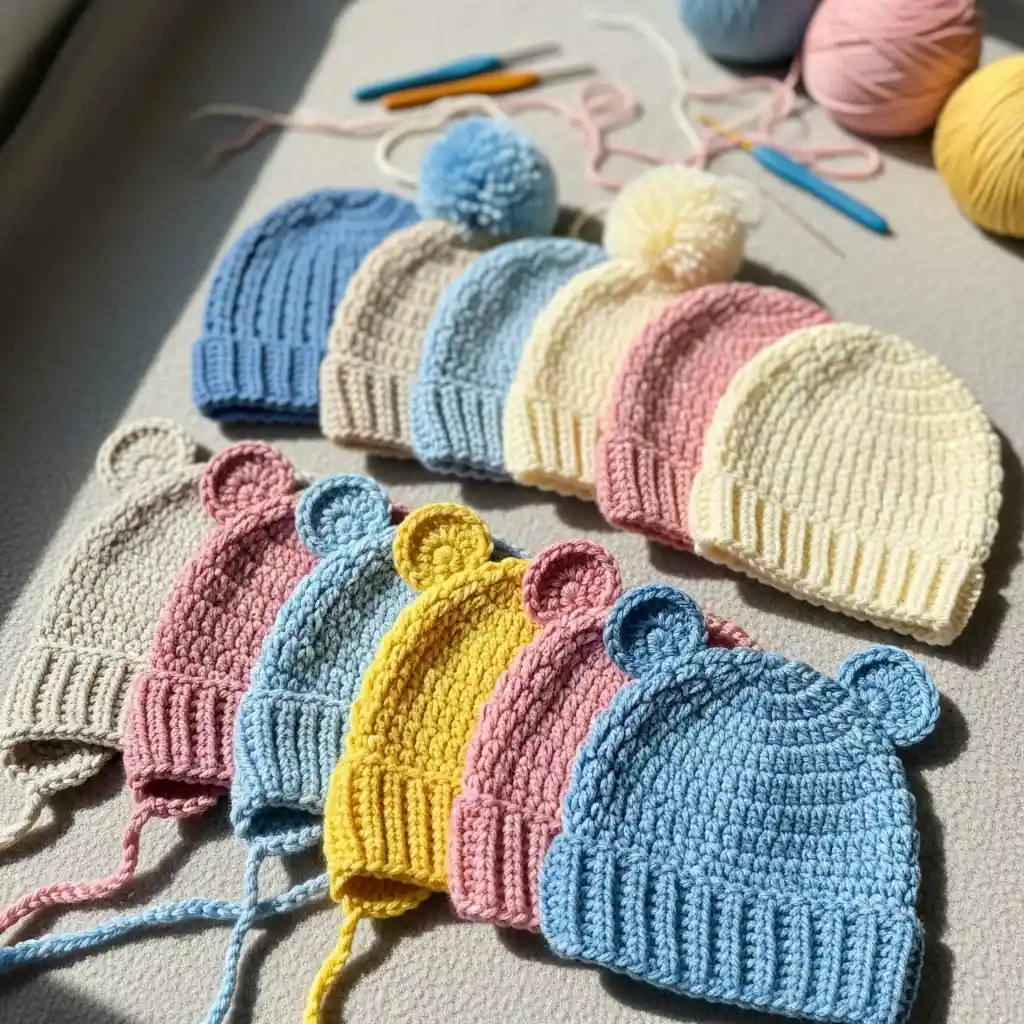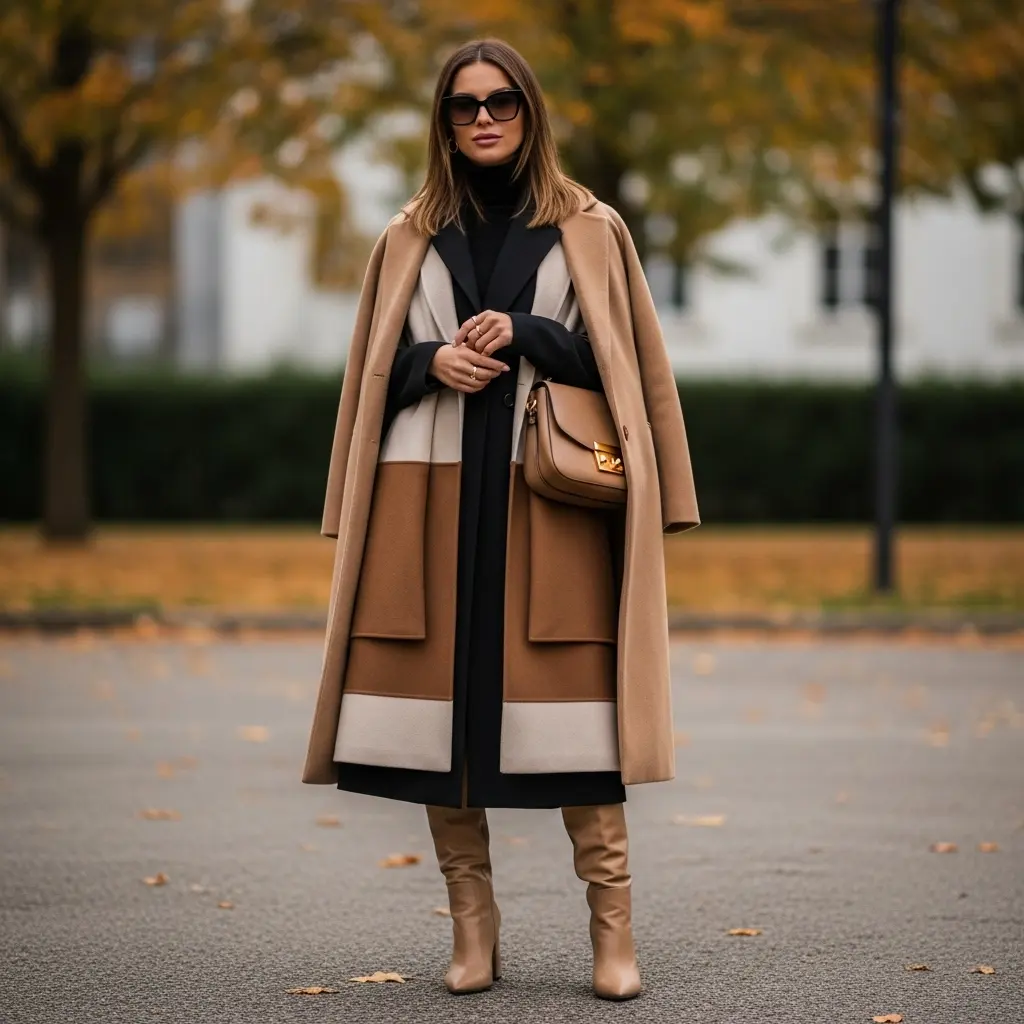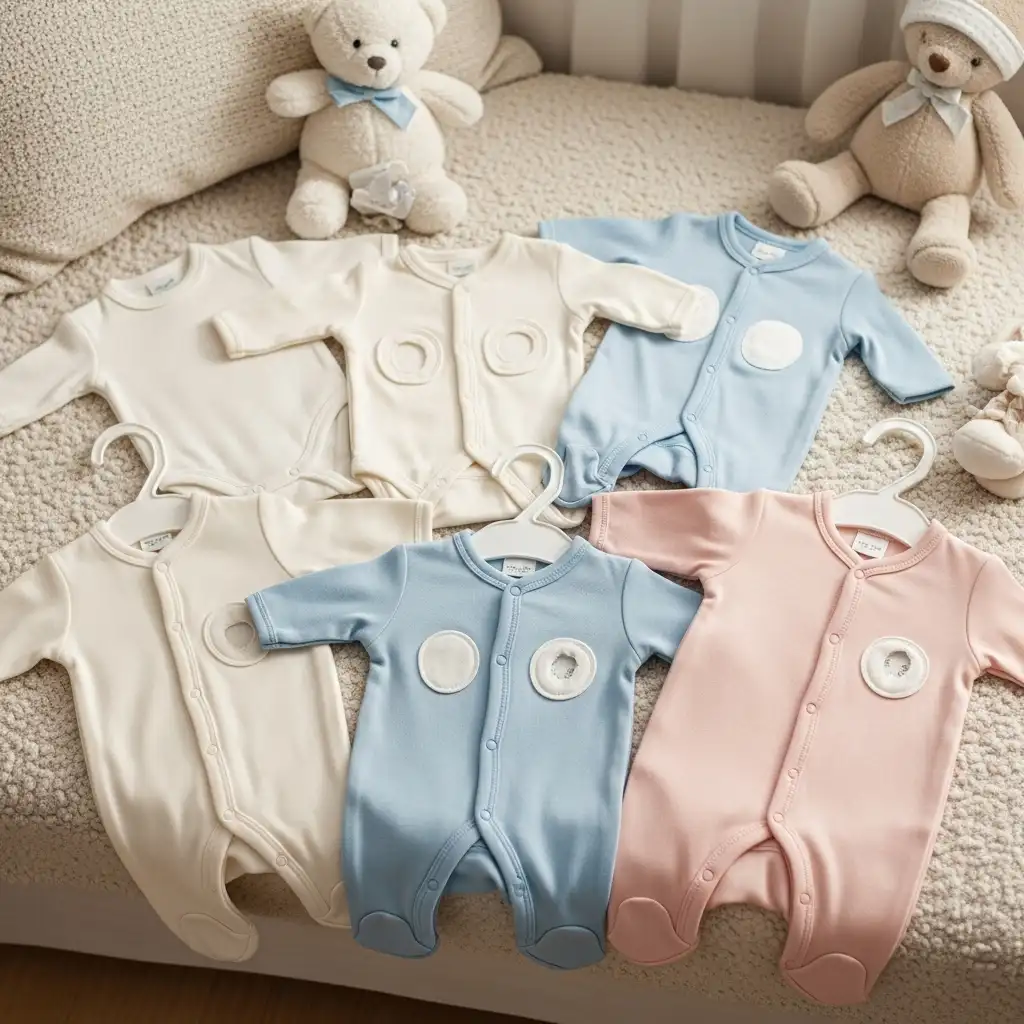
10 In-Depth Essays on Baby and Infant Clothing
Table of Contents
Essay 1: The Complete Guide to Infant Clothing Basics
Preparation for the birth of a newborn involves watching over the essentials in attire so that one does not end up spending more money and preparing insufficiently. Newborns develop extremely quickly within their first three months, whereby newborn size is exceeded in 2-4 weeks, thus it is most convenient to buy 4-6 per basic category in newborn and 6-8 in 0-3 months.
- Onesies (bodysuits) are the foundation of every baby’s wardrobe. Snap-on one-piece bodysuits secure the diaper and prevent the outfit from gaping. Choose onesies with envelope shoulders that side-to-side stretch so you can rip dirty onesies down over the body without having to wrestle them over the baby’s head—a blowout lifesaver. Short-sleeve ones are great for layering, and long-sleeve ones for cold times of the year.
- Sleepers and sleep gowns fill a baby’s closet because babies sleep 17-14 hours a day. Two-way zipped footed sleepers zip open from bottom to top so diaper changes can be made at midnight without having to remove the infant from them. Drawstring or elastic-bottom sleep gowns provide easier access, though babies soon outgrow them as they develop more activity.
- Snap or side-tying kimono-style blouses avoid pulling the garment over a newborn’s sensitive fontanelles and soft head. They come in very useful in early weeks when parents are still careful about manhandling their sensitive newborn and when the healing stump of the umbilical cord is concerned. look at this…
- Fold-over cuff pants lengthen the life of every garment because the baby will eventually grow. Gentle, stretchy waistbands avoid rubbing against healing umbilical skin. Steer clear of pants that have waist buttons, snaps, or zippers that may cut into sensitive skin.
- Layering like zip-up sweatshirts or light cardigans permits thermal control. The infant’s body temperature cannot be managed, and therefore, easily removable and easily accessible wearing pieces during the day are required. Front-open construction over pullovers is preferred in order to save time.
- Going-home attire especially deserves a special mention—pick something meaningful but sensible. It must be weather-permitting, should fit over a diaper, and feel comfortable on. Purchase two sizes because it is difficult to accurately estimate a newborn’s actual size before birth.
- Seasonal requirements are dominated by the seasonal climate. Summer babies require light, loose garments and sun gear protection, while winter babies require bundling blankets, thicker sleepers, and warmer hats. But remember that overheating is a worse option than feeling slightly chilled, so watch the temperature of the baby by taking his chest or back into account rather than his hands and feet.
- Practical tip: Keep a “spare outfit station” in your diaper bag, in the car, and also in your primary living space with a whole change of clothes, such as a onesie, pants, and socks. Blowouts and spit-ups happen too frequently and at any time, especially after meals.
Essay 2: Fabric Choice and Infant Clothing Safety Requirements
The choice of fabric has a direct bearing on the comfort, health, and safety of an infant. Infants’ skin is thinner, more permeable to chemicals than adults’ skin, and more prone to absorbing chemicals, but at a greater loss of water as well, and therefore the choice of fabric becomes a necessity and not just an individual preference.
- 100% cotton is the queen of baby clothing, especially organic cotton that has been pesticide-free and processed chemically free. Cotton also gets airflow naturally with breathability that stops sweating and keeps the body temperature at equilibrium. It absorbs the moisture away without getting wet, therefore keeping the baby warm while asleep and moving. Cotton softness averts skin irritation, which is important since newborn babies have delicate skin that breaks out and becomes allergic to everything.
- Interlock cotton is double-knit and thus heavier and smoother than standard jersey cotton. The edges of the fabric are curl-resistant and provide added durability from repeated washing. Close-knit also eliminates the potential of getting caught up in small fingernails or objects.
- Bamboo fabric becomes popular as it is silky like any other fabric and has antimicrobial properties naturally. Bamboo is also more absorbent and good with temperature control. But bamboo viscose production is chemically treated, so select bamboo fabric that is OEKO-TEX or equivalent certified, i.e., no toxic chemicals are applied.
- Merino wool, contrary to what is thought, is an ideal garment material for babies when properly taken care of. Best merino fibers are lightweight, fireproof on their own without chemicals, and warm-regulating more than man-made fabric. Merino draws sweat from the skin but retains the warmth of the body even when soaked. The only drawback is that it is a maintenance wear and costly when compared to cotton fabric.
- Avoid the use of man-made synthetic material like polyester for normal wear, especially night wear. While stain-resistant and durable, synthetics are poor breathers and absorb babies’ heat. They build up static electricity and are also responsible for irritations on sensitive skin. Polyester nightdressing has been banned or forbidden in certain nations owing to its inflammability.
- Chemical treatments and finishes are suspect. Wrinkle-resistance treatment, flame retardants, and stain repellents all have toxic chemicals for babies. Use “chemical-free” clothing or look for labeling that is tested by groups like GOTS (Global Organic Textile Standard) or OEKO-TEX Standard 100, which test for over 300 toxins.
- Safety of the dye matters. Azo dyes are common in clothing manufacturing and release carcinogenic amines when they come into contact with saliva or skin—unfortunate because babies will be gnawing on clothes. Wear clothing dyed with natural colors or clothing with a safe amount of dyes certified. Unadorned clothing with a natural color eliminates the problem completely.
- Fabric weight should be suitable for the season and climate. In hot weather, light-weight (4-6 oz per sq. yd.), in changeable weather, medium-weighted (6-8 oz), and in winter, in hot weather, heavyweight (8+ oz) is ideal. Rather than one heavy fabric, several thin ones pasted on top of each other demonstrate higher tolerance to temperature.
- Testing the cloth prior to buying: Rub the cloth on the cheek or inside the wrist—two sensitive skin regions, just like for a baby. If irritating, abrasive, or scrubbing, it will cause discomfort to your baby. The cloth must be silky, comfortable, and smooth but not stiff or chemical-fragrant.
Essay 3: Understanding Baby Clothing Sizes and Developmental Trends
Baby clothes sizes confuse even old-timers because sizes with manufacturers and nations are different, and babies grow at completely different rates based on genes, diet, and personal growth phases.
- Size markings vary between companies. Some marks by age (newborn, 0-3 months, 3-6 months) and others by height or weight. European companies usually mark by height in centimeters (50, 56, 62, 68), which is a better approximation than marking by age category. Always look at the printed actual measurements on the garment label and not merely the age label.
- Newborn length only usually fits 5-8 pound, up to 21.5 inch long babies. Approximately 30% of newborns are over 8 pounds, however, and will never fit newborn sizes. If your baby is larger on prenatal ultrasounds, skip newborn sizes altogether and purchase 0-3 months instead. Premature infants, however, usually need preemie sizes (up to 5 pounds), and bigger chains rarely carry these tiny sizes—specialty shops do.
- Developmental spurts are normally timed: 7-10 days, 2-3 weeks, 4-6 weeks, 3 months, 4 months, 6 months, and 9 months. Babies develop almost before your eyes, suddenly reaching just the right size of clothes a few days ahead. Provide for a whole new wardrobe every 2-3 months of the baby’s first year.
- Body proportions are actually varied in babies. There are babies with longer torsos and shorter leg, and there are shorter torsos and longer legs. And because of this, a onesie will fit perfectly, but pants of the same size range rouches unattractively or is too small. Check your baby’s individual size and purchase in proportion—you may need to have pants in one size and one-piece onesies in another.
- Brand-to-brand size differences are two sizes too small. Carter’s, for instance, fits small and snug, and Gerber and similar ones fit larger. Designer brands fit large so there will be room to move around. Keep track of brands that fit your baby so that it is convenient to shop in the future.
- Signs that the garment no longer fits: Red marks on skin after wear, from too-tight elastic or binding material. Crotch snap on onesies refuse to snap shut willingly or must be snapped shut. Sleeves or pant legs are eons too high above wrists or ankles. Baby hates the article or seems uncomfortable and cranky. Size up as soon as you notice these signs—compelling babies to wear too-small clothing hinders mobility and makes them miserable.
- Buying strategy: Purchase most of the clothes a size larger than infant. Invest more in 0-3 and 3-6 month sizes, and purchase 2-3 newborn sizes for hospital pictures and homecoming, but skimp on the huge ones. Purchase sizes 6 months and larger on end-of-season bargains—spring bargains of winter trash, fall bargains of summer trash—since you can make fairly smart guesses about sizes in the future.
- Seasonal size problems must be foreseen. If your baby is born in January and will be wearing 6-9 month sizes when July-August comes, you must buy summer apparel in those larger sizes, not winter apparel that fits seasonally but seasonally. Create a simple chart graphing your baby’s estimated sizes by season to assist in shopping.
- Second-hand size benefit: Since babies get to wear each size for so brief a period, hand-me-downs and thrift store finds are barely used. This permits the affordability to buy multiple sizes ahead of time, especially in good quality brands that you might otherwise not be able to buy. The savings in dollars are well worth it to have something that doesn’t fit due to size ambiguity.
Essay 4: Critical Baby Clothes Design Features for Effective Baby Clothes
Effective baby clothes design makes a miserable routine of dressing into a quick, smooth motion that brings comfort and reassurance to the infant when dressed. Half-asleep parents wrestling with demonic closures at 3 AM with a blowout diaper soon discover what the most critical design considerations are.
- Easy-on closings are most critical. Snaps overrule buttons on babies’ clothing because they open securely when one hand is holding the baby in the other, with less clumsy messing about when parents are tired, and not being a hazard of choking if they come apart. But snap placement is important—snaps up under legs and across crotch allow diaper changing without removing entire garment. Bottom-up opening two-way zippers also grant access without exposing the upper half of the baby’s body, and keep it warm.
- Shoulder envelopes on bodysuits create stretchy necklines that side-release rather than a permanent round opening. On diaper blowouts that ride up the rear of the baby, these genius shoulders allow you to slide the onesie down over the body and off the legs rather than tear it off over the head, so dirty fabric won’t make it into the baby’s face and hair—a task that all parents come to love.
- Leg and cuff fold-over cuffs serve a number of purposes. Fold-over cuff-built-in mitts in sleeves prevent babies from scratching small faces with hard fingernails, but are easy to push up for access to hands when scratching is finished. Fold-over cuffs at the legs protect small feet and provide added life to pants until the legs are developed. Fold-over cuffs need to have adequate material to fold over for usability without being too bulky.
- Flexible, tag-less construction fits so much more comfortably. Babies’ skin is sensitive, and they complain about objectionable tags, stiff seams, and restrictive fabrics. Better manufacturers print labels onto the fabric itself or employ removable tags that won’t leave scratchy residues on skin. Seams need to be flat-locked or overlocked smoothly, best on the outside of clothing, so that they won’t chafe rubbing skin.
- Footed versus footless designs. Footed sleepers eliminate the nuisance of individual socks that always seem to never remain in place, are heat conductors, and are easier to get dressed. Footless accommodate babies with varying leg lengths in the same size category and allow for bare feet during tummy time, which is sensory-friendly. Parents prefer both, utilizing the footed for nighttime and the footless for daytime use.
- Non-slip properties are necessary once walking and crawling start. Slip patterns on the bottom of footed sleepers prevent slipping on tile or hardwood floors, deterring falls. Smooth-soled sleepers are beneficial before these ages, allowing babies to be able to push their feet against the changing pad when diapering instead of the changing pad being held by the baby.
- Value is added in every piece with progressive size details. Stretch waistbands or drawstrings are lenient to expanding and changing body shapes. Cuffed styles will roll down once the child gets older. Torso with extra length in the midriff section are longer wearable than fitted ones.
- Low-maintenance and fast-drying construction is worth more than one can imagine until kids arrive. Babies require several changes of clothes per day due to spit-up, blowouts, and feedings. Clothes that come off the dryer ready to wear with no ironing or special care washing are a laundry load-saver giant. Avoid clothes that have too much trim, sequins, or appliques, which make them hard to wash and probably even destroy to make them choking hazards.
- Practical advice: Before you purchase, ask yourself: “Would I be able to modify this outfit in near-dark with one hand containing a squirmy baby?” If not, don’t purchase it regardless of how cute the article is.
Essay 5: Seasonal Wardrobe Planning for Babies
Seasonal dressing of a baby is about striking a balance between protection and comfort, and babies grow rapidly and erratically. A winter baby will need an entirely different set of clothes from a summer baby, but they both need smart layering systems and weather gear that easily accommodates size changes. Spring babies (March-May) come in transition weather with temperatures that alternate between cold mornings to hot afternoons. Develop a layering wardrobe of light clothing: short-sleeved body suits, light trousers, and zip-up cotton hoodies or cardigans that can be easily put on and taken off. Incorporate some long-sleeved body suits for the winter period. Incorporate a lightweight jacket or bunting as outerwear, but don’t purchase bulk winter kit as the baby will outgrow it next winter. Buy and plan 6-month sizes of lightweight summer clothing because your spring baby will have already grown out of cold-weather, smaller sizes by summer. Summer babies (June-August) need a light quantity of gear that allows them to breathe and protects them from the sun. Short-sleeved body suits, lightweight rompers, and loose-fitting cotton shorts or trousers are essentials. Despite nature, babies can’t spend much time outside in direct sunlight in just a diaper—too sensitive. Opt for light long-sleeved shirts for sun exposure with UPF ratings, or cover arms and legs with porous cotton. Wide-brimmed hats protect faces and necks from the sun. In air-conditioned indoor lodgings, keep a light sweater on hand because babies lose heat more quickly than adults. Purchase 6-9 months of warm clothing sizes for the future autumn.
- Fall babies (September-November) have to deal with decreasing temperatures, hence they need step-by-step coverage from light to bulky clothing. Begin with medium-weight cotton bodysuits, leggings, and layering items such as light sweaters. When the temperature cools down, add fleece-lined or thermal alternatives. Outdoor play demands a medium-weight coat or jacket, but opt for those that can expand with them—jackets that have fold-back cuffs and adjustability contribute to wear. Purchase 3-6 month sizes in cold-weather weight because your fall baby will be halfway between the coolest times in large sizes.
- Winter babies (Dec-Feb) require the largest cold-weather gear. Layer starting with base layer (bodysuit), middle insulating layer (fleece or thermal top and bottom), and outer protective layer (bunting or snowsuit for outdoor activities). Don’t have large objects under car seat straps because it takes away from safety—replace with using over-buckled harness or car seat straps that strap babies intended. Warm hats are needed since babies lose a lot of heat from the head, but remove hats indoors to not overheating. Purchase good winter clothing at your current size and purchase spring/summer clothing in 3-6 months’ sizes for upcoming warmth.
- The “one layer more” rule is a good guideline: clothe the infant one layer more than you and the adults are dressed, when you are just as comfortable in the same condition. If you’re comfortable wearing a t-shirt, dress the infant in a bodysuit and a light layer. If you’re wearing a sweater, the infant requires a base layer, a mid layer, and perhaps even a light jacket.
- Temperature taking mode: Observe the tummy, back, or chest temperature rather than hands and feet to determine whether they are adequately clothed. The hands and feet will be cold in nature and will never be capable of reflecting body temperature correctly. The chest should be warm but shouldn’t be hot or sweaty. If actually sweating, particularly on the back or head, remove a layer immediately.
- Inward as a function of outward dressing requires other practices. Constant temperatures in inward spaces are where clothing can be worn. Outside, particularly if wind or rain is involved, babies need something more than temperature-controlled covering-ups. Outermost layers of wind-proof material, rain-proof alternatives to rain, and damp-conducting material that does not humidify become the highest priorities.
- Climate-specific requirements: Hot and humid climates require extra care for airy, moisture-retentive fabrics since the babies generate so much heat. Dry climates require humidifiers and moisturizing in addition to the normal to compensate for rubbing against clothes. Altitude levels require extra sun protection even on chilly days. Coastal areas require wind-blocking layers even on chilly temperatures.
- Practical storage tip: Store clothes by season and size, and have the out-of-season or too-large clothes shipped out to be stored in labeled containers. When the time comes and the baby has grown out of the next size, you’ll have the appropriate clothes prepared rather than running out and purchasing weather-appropriate clothes after the weather has already changed. Apart from regular everyday wear, babies need special wear that is adapted to the needs of certain activities and phases of development. Design-special wear meets safety requirements, supports good development, and makes life easier if selected rightly.
Essay 6: Specialized Baby Clothing for Sleep, Safety, and Development
- Sleep sacks and wearable blankets revolutionized the safety of baby sleeping. Loose blankets contain suffocation and SWADDLING danger for babies, but sleep sacks keep them warm without risk. These sleeveless or short-sleeved wear blankets zip or snap up, leaving the legs uncovered but warming the lower body and the legs. Room temperature TOG-rated sleep sacks are: 2.5 TOG for cold rooms (61-68°F), 1.0 TOG for regular temperatures (69-74°F), and 0.5 TOG for warm rooms (75°F+). Ensure the armholes and neck are snug so the infant can’t slip down into the sack, rolling over his face.
- Newborn swaddles satisfy the infant’s need for the warm, enclosed sensation they experienced in the womb with the added security of sleep. A swaddled blanket is awkward and falls apart, so parents prefer specially designed swaddles with velcro or zippers that allow for a snug wrap. But swaddling has to stop when there is any indication that babies can roll over—typically 2-4 months—because rolled-over swaddled babies suffocate. Transition swaddles with arm take-out remove, provide a smoother transition for babies from full swaddling to arms-off sleeping.
- Mesh bottoms and tops for supervised tummy time make babies happy and not too warm while participating in this activity critical to development. Tummy time builds neck, shoulder, and abdominal muscles that the baby will use to sit, crawl, and walk, but the upset baby will fight it. Lightweight, loose bottoms and tops offer flexibility and protect the baby from overheating while struggling on the floor.
- Footless rompers and body suits are more suitable than footed rompers for motor development throughout the day. Bare feet provide better traction and sensory input than socked or shod feet in the process of learning rolling, scooting, and eventual crawling. Every child’s occupational therapist encourages a maximum amount of barefoot time at home as realistically possible to allow normal growth, balance, and sensory integration of the feet.
- UPF 50+ single-piece rash guards offer sunscreen-free beach and water days, unhealthy options for infants under six months and a terrible idea to use with discretion in older infants. Snug-fitting, quick-drying suits protect sensitive skin from chemicals in the pool and the harsh rays of the sun. Long-sleeved and full-legged protection is ideal, as long as the fit isn’t constricting.
- Holiday or formal wear adjustable-fit garments make holiday or formal wear more practical. Guest babies at wedding ceremonies, church functions, or holiday parties need formal clothing, yet there is no need to spend a great deal of money on expensive formal wear that quickly changes sizes. Purchase special occasion pieces with stretchy fabric, an adjustable waist, and classic style that will not go out of fashion for two months. Rent out formal baby attire or purchase used, because such attire would be used just once or twice.
- Zipper-less and button-less sleepers decrease the risk of harm to babies who’ve learned to grab hold of and pull on their sleepers. Babies acquire the ability to unzip or unsnap their sleepers in the dead of night, perhaps producing strangulation risks in the form of flapping clothing or chilling them with cold air. And over those little Houdinis, pullover sleep sacks or back-zip sleepers (zippering down the back zipper) keep them covered at night.
- Sensory-friendly clothing caters to universal sensory-sensitive baby requirements with added texture sensitivity, tags, or seams. 1 out of every 20 children has universal sensory processing challenges that make regular clothing uncomfortable or even painful. For fussy babies, look for tagless clothes with seams turned out and no-seam construction in friction zones, and soft, soft fabrics like bamboo or microfiber. Avoid any trimming, scratchy lace, or stiff fabric rubbing.
- Medical access clothing exists for babies with complex medical needs. Some need constant access for IVs, feeding tubes, or implantation of medical devices. Zip panel clothing, velcro, or snaps placed to give medical access without the need to fully undress the baby is available. Though not necessarily needed by the typical baby, these products make a huge difference in lifestyle for those families who have a routine of medical care on a daily basis.
- Developmental milestone wear: At the time babies begin crawling, their clothes get modified. Imitating sitting (around 6-8 months), they need elastic waistbands that do not strangle upon bending at the middle. Crawlers require support at the knees—parents iron-on knee pads on favored pants or purchase reinforced-knee pants. New walkers need no-slip shoes or sticky socks in place of smooth-soled shoes.
Essay 7: Laundry Care and Maintenance of Baby Clothes
Proper washing of baby clothes makes the lifespan of soiled clothes longer, preserves the quality of the fabric, prevents dirt from building up on it, and, most importantly, most importantly—prevents productive sensitive baby skin from coming into contact with chemical residues produced by toxic chemicals that would make it sore, cause rashes, or induce an allergy. Washing baby clothes is more about technique and know-how.
- Washing all the new baby products before the baby puts them on eliminates factory chemicals, excess dyes, and deeply ingrained irritants. Sizing treatments on factory floors, shipping pesticides, and end-finish chemicals could all be irritating to a baby’s skin. Wash new products at least twice before first wear, and ideally in hot water, to remove as many chemicals as possible. And that includes so-called “pre-washed” products because the term isn’t regulated.
- Detergent selection is a critical component of healthy skin. Choose fragrance-free, dye-free baby-oriented or sensitive skin detergents. Additives to detergents—fragrance, optical brighteners, enzymes—are usually irritating to baby skin. Dreft, Seventh Generation Baby, and ECOS are a few brands that have built up baby-safe reputations, but double-check ingredient labels always, since formulations are not static. Never use so much detergent; too much soap is deposited on clothing that touches the skin and makes it worse. In fact, using less clothing than the package suggests usually leaves your clothes cleaner because detergents now are so concentrated.
- Opt out of dryer sheets and fabric softener entirely for baby wear. They encase fabric with chemicals that reduce absorbency—particularly a no-no for bibs, cloth diapers, and burp cloths—and add fragrances and additives most easily irritating baby skin. For static cling, use one-half cup of white vinegar in the rinse cycle, which smooths fabric naturally without leaving residue behind. Vinegar also removes soap residue and odor without adding chemical fragrance.
- Temperature and soil are set by fabric and soil depth. Hot water (130°+) cleanses most effectively and is required for heavily soiled items like blowout-diaper or spit-up-stained garments. But hot water damages natural fibers and bleaches colors more quickly than cold water. Warm or cold water (80-90°) cleans adequately enough for lightly soiled every day wear without destroying fabric. Delicate fabric needs delicate or gentle cycles, but tough cotton pieces don’t mind ordinary cycles.
- Spot removal has to be done at once because baby stains—breast milk, formula, spit-up, diaper blowouts, baby food—set fast and can’t be eliminated if not acted on. Cold stain from spots rinses out instantly with cold water, before the stain dries. Never pre-wash soiled items in the dryer initially because heat sets stains irreversibly. On milk stains (breast milk, formula, spit-up), cold soaking using enzyme stain remover before wash. For the diaper, hot water, treat the stain, and hot water wash if allowed. Sunlight will bleach most organic stains naturally on its own—hang wash-and-still-damp colored clothes outside in sunlight after the wash cycle for natural whitening.
- Self-service wash instructions maintain garment integrity. Wash baby clothes separately from adults’ clothes for the first few months in order not to expose them to the harsh detergents and dyes used for adult clothes. Wash darks in isolation from light colors to prevent dye transfer, which is worth it because most mothers want their baby clothes to be white or light-colored so that stains are easily visible to need to be cleaned. New, highly colored items, particularly blues and reds, must be washed in isolation several times before being added to regular baby wash.
- Clothing durability and safety are affected by drying methods. Low or medium heat drying is convenient and completely dries most cotton-made baby clothing. Hot heat, nonetheless, shrinks natural fibers and kills elastic in waistbands, cuffs, and leg holes. To extend an article’s life, remove clothes from the dryer while they are still damp and air-dry to dry completely. Line drying or flat drying eliminates the risk of shrinkage and is thriftiness, but sluggish and space-hungry. High-heat drying in a machine, never, ever, flame-resistant sleepwear, since high heat destroys the flame-resistant treatment.
- Special treatment for special stuff: Weighted sleep sacks and pajamas must be washed carefully and air-dried to maintain safety functions. Snap fasteners burst open in the wash—snap snaps first or place in mesh laundry bags to avoid ruin. Elastic-band garments such as sleep pants and sleep gown bottoms keep their elasticity longer when air-dried, not machine-dried. Fine items with trim must be washed in mesh bags so they won’t be harmed.
- Laundering frequency: Shorts, cardigans, and jackets can be worn a few times before laundering if they are not dirty. Bodysuits, undershirts, and sleepers should be laundered after each use. Burp cloths, bibs, and spit-up cloths should be laundered daily since they touch the baby’s face and contain bodily secretions.
- Storage after wash: Brand-new baby apparel should be hung or folded immediately to avoid wrinkles and mold smells. Put away in a dry, hygienic area out of reach of adult garments and household cleaning materials. Do not put scented drawer sachets or liners near baby apparel since perfumes move to apparel and are irritating to sensitive skin.
Essay 8: Cost-Saving Baby Clothes Strategies
Infant fashion sells precious, round-the-clock outfits to expectant mothers and fathers, but infants’ continuous growth and dressing needs make this market a money pit in the making. Strategic planning, smart shopping, and resourcefulness allow families to dress their babies in what is best without economic burdens.
- Borrowing and hand-me-downs provide the most affordable fashion source. Baby garments see little wear since every size lasts only 2-3 months, so lendings are effectively brand new. Accept gratefully loans from family and friends, even if not your style—you can swap out a few favorites you love between and use freebies for everyday wear. Participate in local parents’ clubs or site message boards where families swap gently used clothing. Communities have also created clothes exchange programs whereby parents exchange old clothing, replacing their wardrobe without the expense of purchasing new ones.
- Second-hand purchases at consignment stores, second-hand stores, yard sales, and online stores (Facebook Marketplace, Craigslist, Poshmark, ThredUp) return quality apparel for a percentage of the retail price. Shop the consignment stores at the end of each season as they are clearing to make room for the new season—designer goods at 75-90% off the original price. Items in second-hand shops should be carefully checked for stains (especially necklines and arm pits), broken elastic, missing snaps, or plugged zippers before purchase. Don’t hesitate to negotiate, especially when purchasing more than one item or discovering small flaws.
- Strategic shopping purchases include purchasing only what is absolutely required in required sizes when required. New parents overbuy newborn sizes, and small things grow out of them very quickly. Dress simply: 5-7 bodysuits, 5-7 sleepers, 3-4 pairs of pants, 2-3 night-out attire, and the same outerwear for every size. This figure includes average wear and tear and accidents and minimizes waste. Buy the next size up when present clothing fits too tightly, rather than buying in excess of one size.
- Pre-buy closeouts, purchase out-of-season. During July-August, clean out the previous year’s summer wear to begin room for fall stock—purchase winter wear 6-12 months bigger than your baby currently is. Similarly, purchase summer wear during January-February at closeout prices for the forthcoming summer wear. This does involve some guessing size pre-buy, but even a slight mistake on guessing will be compensated by purchasing high-name brands for 70% off, and it will save you dollars.
- Store-brand basics typically offer name-brand quality for less. Target Cat & Jack basics, Old Navy basics, and Walmart Garanimals basics provide solid, well-made basics that last a few babies. Indulge in special occasion clothing or some flourishes (such as excellent design touches) on name brands, and build the basics from less costly basics.
- Quality, not quantity, does not accept false economy. A single well-made sleeper that lasts to 50 washes is better than three shoddily made ones that pill, fall apart, or rip at 10 washes. Inspect for stitching, snap strength, and fabric weight before buying. Online feedback typically indicates which exact models from each company are good and which are not.
- Gift registries ought to be functional clothing and not cute baby clothes. Register for specific sizes larger than newborn (3-6 months, 6-9 months, 9-12 months) in classic pieces: bodysuits, sleepers, and seasonal items. Get gift-givers to refrain from purchasing newborn size if you know that you have a small baby. Baby shopping gift is fun to everyone, so direct the energy into something that you will be able to use.
- Gender-neutral items purchased in neutral hues (white, gray, yellow, green, orange, brown) and classic styles can be used by multiple children regardless of gender. Pale pink and pale blue corner the market of baby clothing racks, but neutrals patiently bide their time and are more cost-effective for people with multiple children or who can’t guarantee future conception. Neutrals retain more resale value and higher popularity with hand-me-down recipients.
- DIY repair and alteration extend garment life. Master the simple repairs: a lost snap replaced, a small hole mended, elastic added around a waistband that is too loose, or pants hemmed up with an acceptably brief hem. A bit of effort means no longer throwing away good, wearable clothes. Similarly, recycling outgrown clothing extends use—cut off the legs of too-small footed sleepers to add several more weeks of wear as footless nightgowns.
- Buy/sell/trade clubs and subscription plans like Rent the Runway Kids or children’s consignment stores in your town, where you can swap, are a shopping alternative. A few services have you borrow clothing from the service that you redeploy when it no longer fits, the next size up. Others offer store credit on equipment you outgrow, and you use it to purchase “new” next-size-up clothing. These systems are most effective for high-end outerwear or special occasion clothing.
- Clothing budgeting ensures costs stay within bounds. Set a reasonable per-month or per-size budget according to your means and adhere to it. Monitoring expenses uncovers patterns—most moms find they over-spend on some items (e.g., bodysuits) and under-spend on others (e.g., outerwear for specific seasons), and this can be anticipated through.
Essay 9: Baby Clothing Wardrobe Organization Systems
Systematic baby clothes save you time in wild times, enable you to choose things you need right away, and assist in keeping track of what you have so that you won’t go out and spend a lot of money on too much. Organizing also enables it to become easier for partners, caregivers, or members of the family to dress the baby.
- Organizing by size is the foundation of any good system. Sort clothes into size ranges (newborn, 0-3M, 3-6M, 6-9M, 9-12M, 12-18M), and place the current size and the next larger size beside them. Store future sizes in labeled bins or boxes beside the main closet space so it is not crowded. Whenever your baby outgrows the following size, add the new size to the middle section when storing away outgrown clothes to be stored, donated, or sold.
- Vertical storage also doubles the area on nursery dressers and closets. Organize the drawers with drawer dividers by clothing types: bodysuits, sleepers, pants, outfits, outerwear, and accessories. File-fold vertically (like filing folders) rather than horizontal piling so that you can see the whole thing at one glance without having to root through the whole drawer. This method—popularized by organizing consultant Marie Kondo—maximizes exponentially in accessibility and prevents clothes at the bottom.
Organize by frequency and use within size category. Top drawer: day-to-day basic employed a couple of times a day (sleepers, bodysuits, everyday pants). Middle drawer: everyday wear (outfits, layering shirts, socks). Bottom drawer or storage assigned: special occasions, seasonals not in use now, or additional spares. This system is kept most frequently used in the easiest access and prevents clutter from occupying the top storage space.
- Color coding systems help busy caregivers (and parents) quickly recognize sizes, especially when having more than one size. Assign each size range a specified colored hanger, bin, or drawer label: newborn on white hangers, 0-3M on yellow, 3-6M on green, and so forth. The visual system prevents accidentally dressing your baby up in clothes that are too small or too large and helps partners or caregivers locate appropriate ones without much hunting.
- Pre-planning the coordination of clothing saves decision fatigue for evening wardrobe transitions or hectic mornings. Set aside one drawer or hanging organizer to finish outfits—bodysuit with coordinating pants and, if necessary, a layering piece. Capsule wardrobe concepts simply translate to babies: select 3-4 neutral core pieces that coordinate with several patterned or colored pieces and have numerous outfit options from a few pieces. The system keeps dressing easy but composes cohesive outfits.
- Midnight changing station in the nursery keeps the midnight changes convenient. Fill one drawer or basket in the changing station with 2-3 nights of nighttime supplies: sleepers, sleep sacks, bodysuits, and fresh burp cloths. Restock the station during the day so you’re never fumbling in the dark for clean pajamas. Insert a tiny nightlight or flashlight in this area to avoid having to switch on glaring overhead lights that wake the baby up fully.
- Managing outgrown clothes needs a systematic system to steer clear of clutter. Designate one bin or bag for outgrown clothes, placing each in it immediately when it no longer fits, rather than bringing it back to the drawer and causing chaos. When this bin is full, sort everything: save some for little siblings (if anticipated), some to share with friends/family, some to sell on consignment, and some to give away. Wash and fold them before storing them, so stains will not set and be easy to reuse in the future.
- Seasonal rotation bins keep out-of-season clothing out of the way. At a season transition, put the old season’s clothing (winter when spring arrives, summer when fall arrives) in size and season-marked bins: “3-6M Winter” or “6-9M Summer.” Keep the bins in closets, under the bed, or in garage/basement storage. Rotating seasons keeps current, accurate clothing in usable space and keeps the seasonal clothing for future children or selling.
- It is marking everything totally, which is too much but well worth it, especially for more than one child or for the use of hand-me-downs. Mark the compartments of dresser drawers, storage bins, closet areas, and even outfits if your baby attends daycare, where items go missing. For daycare use, soap-based markers or iron-on name tags prevent lost outfits and mix-ups with other children’s outfits.
- Folding and hanging depend on clothing types and the space available. Button-down collared shirts, formal attire, dresses, jackets, and suits should be hung in order to keep them wrinkle-free and hold their shape. Sleepers, bodysuits, pants, and non-wrinkling knitwear should be folded. Maximizing closet rod systems allows you to let rods drop as the baby gets older, eventually enabling them to assist with selecting and storing their own clothing when toddlers.
- Accessory organization avoids frustration with missing hats and missing socks. Use small containers, drawer separators, or over-the-door pockets with transparent pouches for hats, mittens, socks, bibs, and hair accessories. Socks can be clipped together before washing with baby-safe clips or mesh wash bags, so as not to miss a single sock. Assign a designated basket by the door to hold outside accessories such as hats, sunglasses, and sun hats so that they can easily be grabbed when heading outdoors.
- Digital inventory is easy for large families, twin moms, or really anyone who gets a bunch of hand-me-downs. Take pictures of the pieces in each size range or make a simple spreadsheet of what you have in each size. Inventory prevents overbuying and is useful when shopping at consignment or taking in hand-me-downs—you’ll know what you still need to purchase and what would be a duplicate of something you already possess.
- The diaper bag organizer extension must be an extension of your home organization system. Fill the diaper bag with an entire outfit in the child’s current size and one in the next size (in case of long waits outside the home). Restock after every use so that it is never empty. Some parents post a checklist on the diaper bag with items one must double-check prior to going out.
- Transition size solutions are for the awkward middle point when some of the original-sized pieces are still wearable, but others are too small. Set one drawer or bin aside as “transition pieces”—pieces from each size that are currently wearable. This prevents actually too-small pieces from spilling back into the mix while still accommodating natural size overlap.
Essay 10: Special Considerations: Premature Babies, Twins, and Adaptive Clothing Needs
Certain conditions have specific baby clothes solutions that involve unique needs not covered in general guidance. Parents of premature babies, multiples and twins, and medically or developmentally unusual babies require special guidance on how to dress their children appropriately.
- Premature baby clothes consider the needs of premature babies born at less than 37 weeks of gestation, who may weigh only 1-3 pounds and be only 12-15 inches long. Preemie clothing overwhelms preemie bodies of regular newborn size (5-8 pounds), causing temperature regulation problems, restricted mobility, and danger. Special preemie clothing is available in a few micro sizes: micro-preemie (3 pounds or less), preemie (3-5 pounds), and newborn-preemie (5-6 pounds). Preemie clothing specifically designed has arm and leg holes of proportionate size, neck holes of suitable size, and strategically placed fasteners providing easy access to medical equipment.
- NICU-inspired designs are large enough for the medical care that premature babies require. Side-snap or kimono shirts allow for dressing without the interruption of IV lines, monitor cables, or feeding tubes. Shirts with openings in strategic locations have access to the chest, arms, and legs for monitor placement without requiring the baby to be undressed. Even NICU wear has cord management elements—tiny holes or snaps that allow wires to pass through clothing without creating fatal loops or provide holes enabling heat loss.
- Kangaroo care clothing permits parents and premature babies to stay skin-to-skin and has been shown by research to have better outcomes. Parent tops have hidden openings that shut with velcro or snaps and enable the baby to rest on the parent’s exposed chest but still be covered by the parent’s top for decency and warmth. The garment enables longer periods of skin-to-skin contact without parents being forced to hold blankets over themselves or worry about exposure.
- Transition from NICU to home has to be restyled because the baby is developing, and medical requirements are changing. The majority of premature babies go home and remain really tiny, having to remain in preemie sizes for weeks or months. But after that, they grow up and catch up and will develop really quickly all of a sudden. Be flexible by carrying a set of sizes to provide during this period. Keep the priority accorded to accessible designs even after passing the need for medical equipment, because regular weighing and medical monitoring are likely to be ongoing.
- Dress solutions and twins are easy twin solutions to dressing two or more babies simultaneously. Color coding the babies’ clothes, such that blue colors are used for one twin and green for the other, is one of the methods of maintaining separation, especially if the twins differ in size or feeding timing. But the majority of twin mothers love interchangeable closets, purchasing sufficient gender-neutral items such that any given piece is suitable for either baby.
- Practical coordination instead of precise dressing is a matter of choice, but keep in mind the practicality. The same dresses look cute in pictures, but that means that both dresses must be found in clean condition simultaneously—difficult when washing multiple babies, as well as spit-up accidents. Some twin parents purchase coordinating clothing in different colors, coordinated but not flexible. Others forgo matching altogether and dress each baby independently from the beginning.
- Efficiency systems are required for multiples. Provide individual drawers or compartments for each baby if individual wardrobes must be maintained, or a shared clothing system if they can be exchanged. Have multiple changing stations around the home, each with a full clothing supply, so you’re not rushing babies around searching for clean clothes. Implement a good rotation system that spots and retires outgrown sizes in a timely fashion, since multiples burden wardrobes with double (or triple) wear and wash requirements.
- Special infant clothing for children with disabilities or medical requirements exists for children with feeding tubes, casts, mobility differences, or medical equipment. These adaptive wearings include larger back openings for spina bifida babies, snap-up legs for hip dysplasia babies who use harnesses, open chest spaces for heart monitor or feeding tubes for babies, and extra room in torsos for gastrostomy tube babies. These products are sold by stores like Spoonie Threads, Target’s adaptive line, and specialty medical distributors, though they might be less common than standard baby wear.
- There exist differences in sensory processing among some babies who exhibit excessive distress with contact from some clothes, tags, seams, or tight apparel. Such babies scream around the clock when dressed, over-strip clothes excessively, or show distinct relief when some clothing is removed. Sensory-sensitive babies must be dressed in ultra-soft materials like bamboo or micromodal, wear tagless designs with outer seams, avoid constrictive elastic waistbands, and have any appliqué or trim removed. Some parents prefer smooth shapes designed for eczema sufferers to be suitable for sensory problems.
- Post-procedure or post-op dressing is utilized in infants after a medical procedure or operation. Following circumcision, large bodysuits or gowns rather than tight clothing avert irritation. Baby infants who have had heart surgery need front-opening garments without the arms being brought up over the head. Casted babies need snap-fastening garments along the length of the arm or leg to fasten around the cast.
- Spit-up or daily reflux babies are assisted by some fashion tips, though the latter is not an exclusive need in itself. Keep bibs on rotation with a number of them and keep changing them frequently, rather than wet bibs in direct contact with the skin. Wear dark shades and prints that will cover up milk stains on the garment. Carry a bulk quantity of garments of the same size since these babies require changing clothes multiple times a day.
- Temperature control challenges are seen in premature, those with certain medical conditions, and very low-weight infants, who struggle to maintain their body temperature at a healthy temperature. These babies need close monitoring of layering, room temperature, and the ability to quickly respond to being too cold (cool back or chest, fussy) or too hot (sweating, flushed, increased breathing rate). Don’t dress these babies in wet or damp clothes, even briefly, since they cool down much faster than typical babies.
- Development in siblings’ hand-me-downs utilizes mechanisms distinct from second or subsequent children. Though hand-me-downs of the older siblings provide inexpensive sources of clothing, make sure that clothes are clean and in good condition—babies with older siblings get clothes that have been cycled through a bunch of kids and numerous washings. Test endurance, elasticity, snap performance, and fabric wear before redeploying worn items back into service. Don’t hesitate to retire pieces that are badly worn, even though they still fit technically.
Cultural or religious dress-up rules warrant particular note for families dressing babies in line with particular traditions. Some colors, types, or head coverings are favored by some families for baby wear. Look at what mass-market retailers or specialty stores offer culturally themed infant items, or pick up some sewing skills to alter off-the-rack garments to fit requirements. Online communities particular to particular cultural groups have forums where listings are posted for procuring proper infant clothing.
These special circumstances remind us that while general baby attire guidelines fit most households, flexibility and sensitivity to specific needs result in the fact that every baby can be properly, comfortably, and safely dressed despite whatever special difficulties or circumstances there may be. These ten essays provide comprehensive, complete facts about infant and baby clothing from every possible perspective: needs, materials and safety, sizes, working design, season planning, specialty clothing, care of clothing, budgeting, planning, and special cases. Every essay stands on its own as a separate work while complementing others, providing readers general overview along with specific, concrete advice. content never duplicates because it employs distinctive methods in dealing with the topic in every essay, such that readers are constantly learning something new as they move through. The practical tips, case studies, and explanatory details prove valuable to new parents, old carers, and givers looking for direction.
For your website, include:
- A table of contents for every essay with linking
- Pull-out quotes of the best tips for added visual interest
- A printout list of Essay 1’s keys
- Internal connection among essay topics
- Reader’s comment section in order to share their own experience
- RetryClaude is human and will make mistakes. Re-check answers.


